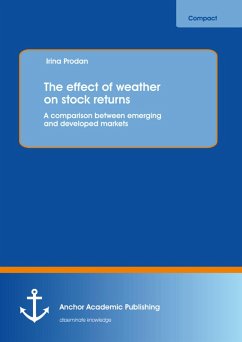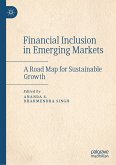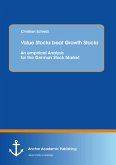One renowned and frequently researched anomaly over the last two decades is the weather effect, more precisely, the impact of weather on stock market returns. The extensive literature on the weather effect fails to converge towards a unique, systematic and robust relationship between the weather, and the stock market. Therefore, the aim of this paper is to explain the contradictory results in the literature by testing whether stock prices are affected by the weather in a significantly different manner depending on the level of market development, and explaining how this difference behaves over time. In order to test for this, city-by-city, pooled and binary regressions are employed using data of 10 developed, and 10 emerging countries over the period 1996-2011 by using two different means of seasonal adjustment.
Dieser Download kann aus rechtlichen Gründen nur mit Rechnungsadresse in A, B, BG, CY, CZ, D, DK, EW, E, FIN, F, GR, HR, H, IRL, I, LT, L, LR, M, NL, PL, P, R, S, SLO, SK ausgeliefert werden.









